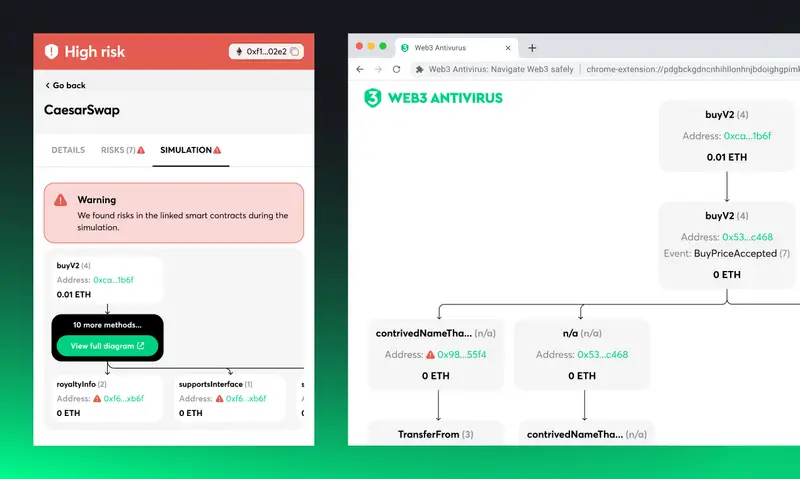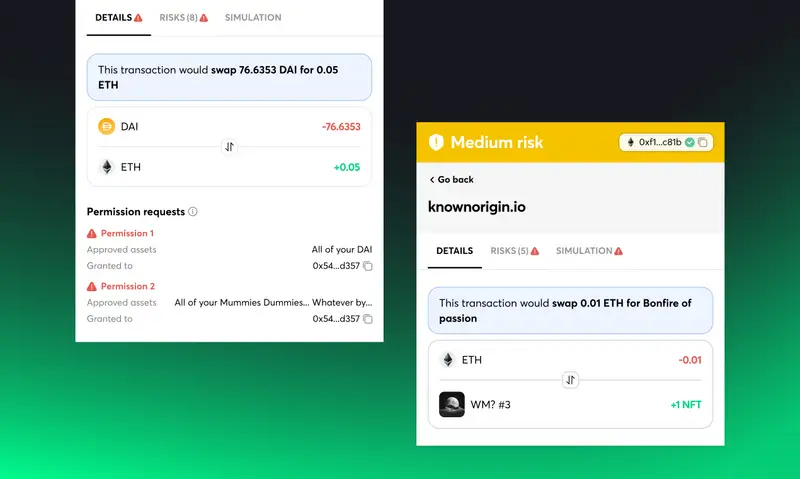Can real-time transaction simulations prevent scammers from stealing crypto assets?

This year was a turbulent one for the whole crypto space. From NFTs to DeFi and exchanges, all areas of the industry felt the cold blows of crypto winter. Unfortunately, such an unfavorable climate is the perfect breeding ground for scammers to exploit distressed investors’ crypto wallets.
The most recent examples of crypto Scams include hackers stealing NFTs through over 500 fake Phishing domains, while robocallers started targeting FTX customers in the aftermath of the exchange’s crash.
Such malicious attacks have become an everyday occurrence in the space, and the crypto community is actively working on protective measures. On one hand, investors are becoming wearier when interacting with Web3 domains and signing off access to their crypto wallets. On the other hand, up-and-coming teams are developing tools to give investors more ways to protect themselves against malicious actors.
The key to more robust security lies in better information
As things stand today, the inner workings of the crypto space remain a mystery to many users, despite the growing popularity of digital assets. Smart contracts, access permissions, transaction details and how the blockchain actually works are still shady areas for many.
This lack of education and understanding on the part of investors is where hackers and malicious actors find a weak point to target their attacks. They create fake websites to lure investors looking for the next hot NFT collection or send shiny spam emails urging users to sign up for a free airdrop. Scammers are everywhere. Regardless of the medium used, phishing attacks are the most common way that crypto investors lose their digital assets for good.
The best way to protect users from phishing attacks is to give them the information they need to understand what happens with their wallet during any given interaction. One company working on bringing this insight to users is Web3 Antivirus. The browser extension developed by the Web3 Antivirus team allows users to scan all websites and Web3 platforms before allowing them to interact with their wallets. What’s more, the W3A team is now working on introducing even more detailed reports and additional functionalities like transaction simulations.
Taking a deeper look into wallet interactions
A crypto wallet is the main point of interaction between Web3 platforms and users, which is a sweet spot for scammers. While users are eager to go on a platform and start using it, connecting their wallets is often required. This is where malicious actors swoop in and ask users to sign off permissions that are not actually required by the platform.
To aid users in preventing such instances, Web3 Antivirus is working on a tool that plays out all wallet interactions and transactions before they are approved. Serving as a simulator, the W3A browser extension will allow users to glimpse the future.

Users will be able to see detailed information about permission requests and understand what specific assets they are granting access to. What’s more, they will receive clear messages explaining what they would get and give away as a result of the transaction. W3A performs callstack backtracing, which allows it to examine all smart contracts linked to the transaction rather than checking only the one a user is currently interacting with.
After that, the user can view the results of the simulation and inspect the contracts and risks associated with each of them.

This upcoming release from Web3 Antivirus is a step in the right direction for users looking to gain valuable insight into their wallet interactions. While there’s a long way to go before understanding and education across the space reach sufficient levels, tools like Web3A can help bring invaluable insights to users.
As scammers continue to exploit the relatively nascent crypto space, analytics and insight tools can help hamper their efficiency. An abundance of information and data is the first step toward a better general understanding of how crypto and Web3 work.
Disclaimer. Cointelegraph does not endorse any content or product on this page. While we aim at providing you with all important information that we could obtain, readers should do their own research before taking any actions related to the company and carry full responsibility for their decisions, nor can this article be considered as investment advice.
Comments
Post a Comment